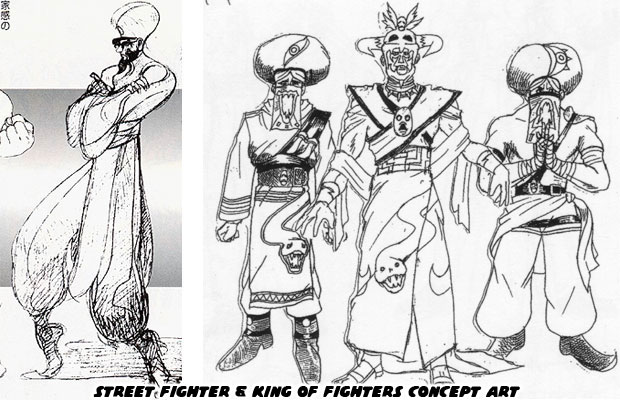
There were some Arab characters that did make it past the planning stages and were put into fighting games. The sad part was how stereotypical they were. Avu was one of the first, introduced in Martial Champion. The game featured brawlers from around the world, each representing their particular nation. The title was released in 1993 and poached a lot of ideas from Street Fighter II. Avu was a very typical Arabian hero. He wore the baggy pants, boots and carried a scimitar. It was as if he was one of the characters from the Arabian Nights stories brought to life. The sad part was that he was supposed to represent the modern Middle East. The same exact details were used with the character Sheik Maherl from Visco's 1996 sleeper Breakers. Surprisingly the Breakers title did well enough in the arcade to garner a sequel, Breakers Revenge. I would not have had an issue with either Avu and Maherl if they had been featured in Arabian Fight or Arabian Magic, the games mentioned in the previous blog. Their look and move selection was definitely pulled from a different era.
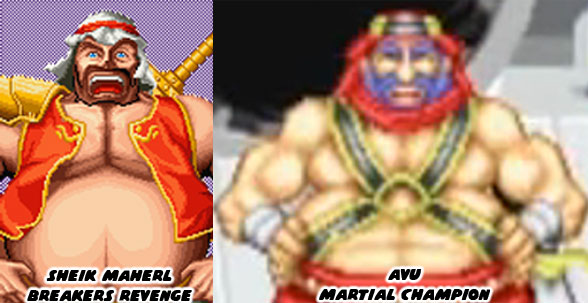
So what was so offensive about the characters aside from the clothes they wore? Well for starters lets take a look at their moves and special abilities. Maherl, like all token Arabian characters, was a master of the mystic arts. Not only could he use his sword in a fight but he could also summon magical creatures. He could call on a djinn that appeared from a puff of smoke to punch at opponents. It was the equivalent of a super fireball attack. Again, context was everything. If this was a move in the games set in mythological Arabia then it would have made sense. But this was a character set in modern times, fighting against martial arts masters and soldiers from the current era. Avu didn't fare much better when it came to stereotypes.
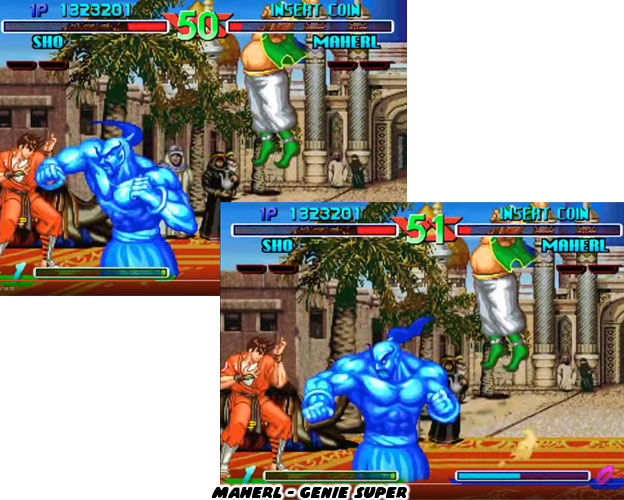
Both fighters were presented as wealthy figures, of course we were to assume they were oil barons. Konami made sure to bring in another cultural touchstone from Arab tradition that wouldn't necessarily win Avu any fans in western culture. In the ending of the game Avu was greeted by his beautiful wives. His harem gushed over him and made the other fighters in the game insanely jealous. They escorted Avu to his limousine and rode off. The translation in the English release of the game mentions a singular wife however in the design and Japanese version the three women were each wives. Avu was a Sheik from Saudia Arabia, and that nation actually recognizes polygamy via Sharia law. A man may take up to four wives provided that he treats each of them equally. If Konami was going to take a jab at a culture at least they managed to get this detail right.
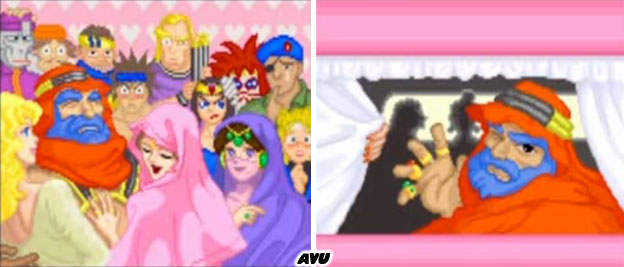
What was odd from a design standpoint was how much of a trope the characters had become. Surely the Middle East was not trapped in some sort of time machine. Surely the people and traditions of the Arabian Peninsula were not still locked in the era of Scheherazade. What the Japanese developers were doing was creating a caricature of the region. They had done this before to great success in other fighting games and would continue to do so. It wasn't as if the Japanese were pulling these ideas out of thin air either. The media they consumed continued to feed them images of how men and women of the region dressed. How their politics were organized, what religions they followed, how their families were structured, how their armies were built and how their societies ran had been seen in the news and was especially dramatized in film.
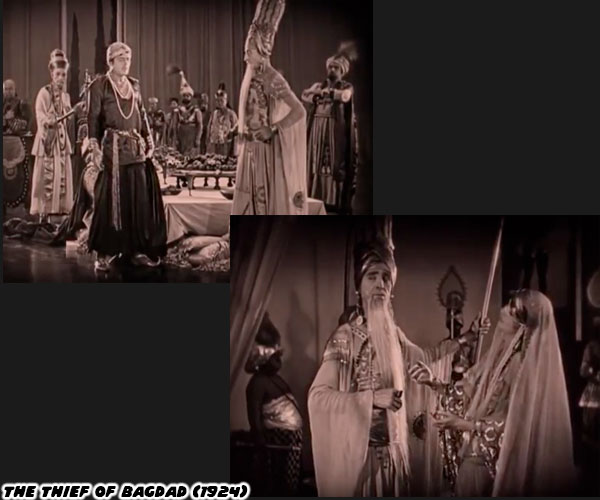
When it came to Saudi Arabia the sharp contrast between the modern world and ancient world was best demonstrated in the film Lawrence of Arabia. The movie was based on the military exploits of Thomas Edward Lawrence. It was set in World War I and depicted the events that would ultimately shape the region. There was a great contrast in the violent conflicts depicted in the movie. On one side there were soldiers with tanks and artillery and they would continuously get swept aside by rebels with swords and rifles riding horses and camels. The nomadic tribal system worked well, was still very much alive in the 20th century and would continue to be honored in the 21st century. These were the things that Avu and Maherl were representing.
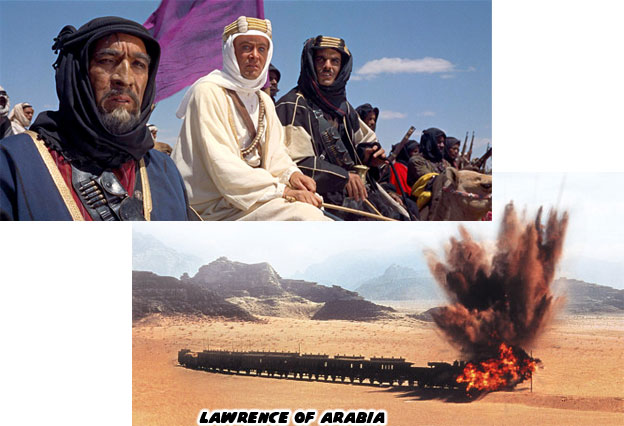
The modern nations of the Middle East were still very culturally isolated. Since they were rich in resources, especially in oil, they held tremendous global influence. If the nations did not want to advance culturally, religiously or socially then they were under no obligation to do so. If they wanted to adhere to traditions that had not changed in a thousand years then they had the liberty to do so. This was cultural relevance, we could judge them and say they were refusing to get with the times. Or they would say that they were defending their culture and traditions from outside influences. Either point of view could be true depending on what you believed in. For example, they stuck with classic fashion and it was accepted as a cultural norm. The thawb for example was a long white garment, it looks like a robe, that had been worn for centuries. It hadn't changed in its design and was still worn by most men when they traveled to a mosque. By contrast fashion in the west changed from moment to moment. A character designer that had to create a modern fighter would have a harder time trying to make a passable western fighter than they would a traditional Asian, South Asian or Arabian fighter. I would like to believe that Avu and Maherl were exaggerations of the region, something more in tune with fantasy characters.
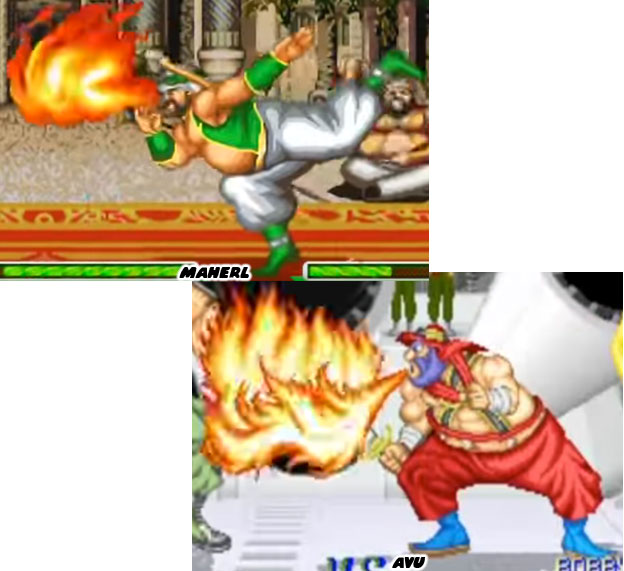
Sometimes it was hard to separate fact from fiction when it came to an "exotic" region. The attacks given to the Arabian characters were definitely given to them from myth. Summoning a genie was just one thing they could do. The other was breathing fire. In the previous blog I had mentioned that the fire breather was based on a classic tradition. Yet how many fighters from the Middle East or South Asia could there be that all shared this same gimmick? Four if you count Karnov and Dhalsim as well. Seeing Avu perform an "Arabian Burner" was nothing compared to the more outlandish moves given these fighters. One of the most absurd moves in any fighting game (I mean just as absurd as the worst Street Fighter IV super attacks!) was used by Karnov and Maherl. The two figures could inhale and expand into enormous balloons. Yet since they were filled with air they were almost weightless and would float to the ground. These things again made sense in a different context. If the games were based in ancient Arabia and the fighters were battling mythical creatures then having some magical attacks absolutely worked. But this wasn't a fantasy game, this was set in the here and now. How did the Japanese designers expect audiences to react to these characters? More important what were they doing to the public perception of the Arabian as a fighter? Were they reinforcing a stereotype or was this harmless funny design work? This was also cultural relevance, it depended on your point of view and whether you were Arab or not.
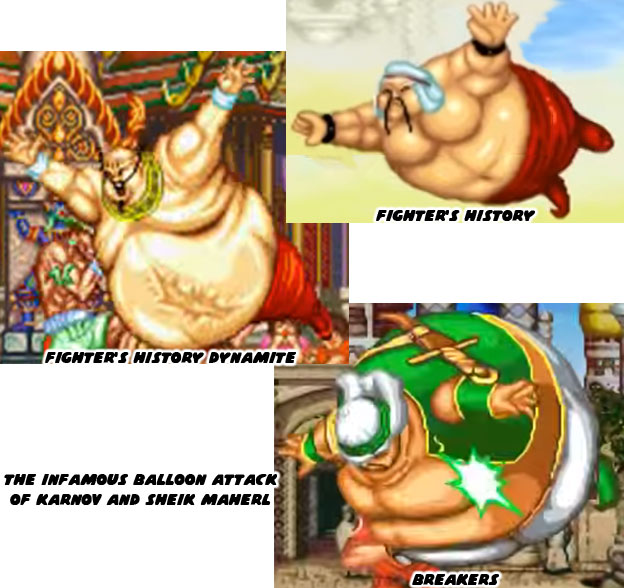
If you were a hero pulled from Arabian tradition then you must be big, fat and rich. The trope was not necessarily sugar coated. Karnov for example was an awe-inspiring character, one of the most important designs in the history of gaming. Yet at the same time he was an ugly caricature of a people. His facial features were an amalgamation of Asian, Arabian and Eurasian characteristics. Yet these weren't necessarily meant to be flattering to the character either. He had rolls on his neck, multiple chins, fat lips and a bulbous nose. His eyebrows were absent and his eyes were drawn incredibly tight. To add a bit of grotesque to an already ugly face he had deep scars on his forehead that told a story about his life as a fighter. Between Fighters History and Fighter's History Dynamite, just a couple of years really, Karnov actually became uglier than the artists at Data East had started with.
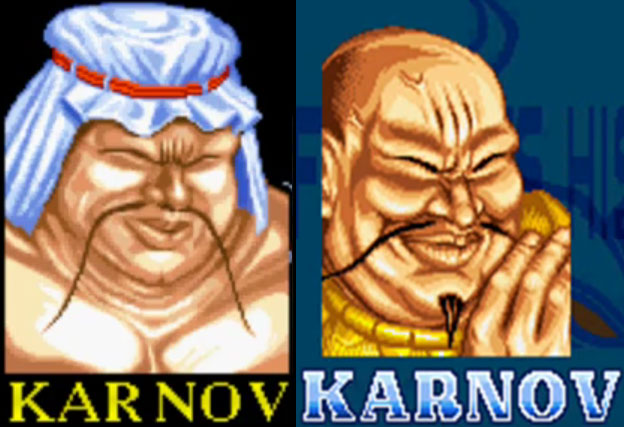
In his final appearance Karnov was larger, fatter and more scarred up than he had ever been. I'm not sure what caused the developers to push the character in this direction. When he debuted he was not exactly a handsome person. He was bald and he was fat but he was also insanely strong and heroic. In some versions of his story he was called a circus strongman rather than Arabian adventurer. His nationality was never quite defined, in one game he spelled his name out of fire in Cyrillic rather than Abjad or Arabic. Perhaps he was Russian or Eurasian instead. On the official box art and arcade posters he was presented as having enormous muscles rather than a gut. He was the antithesis of the typical hero. He was not the dashing Prince of Persia or the devilish Sinbad. He was nonetheless a great character and one of the few body positive role models in gaming.
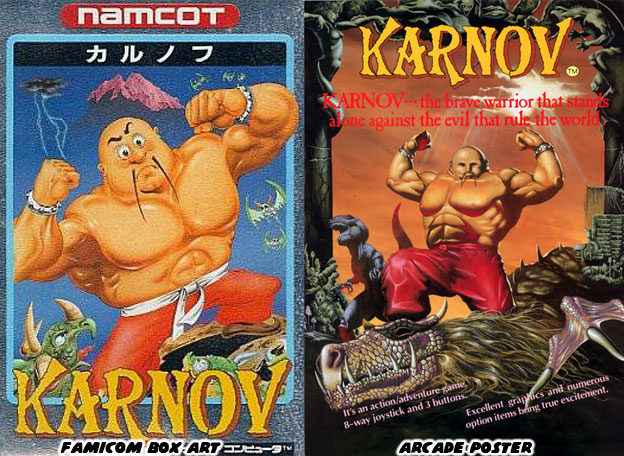
What Data East had changed the most for this character was not his appearance as much as his context. Karnov was a perfect fit for the mythical worlds of ancient Arabia. In his original arcade and console game he traveled through many exotic lands and fought all sorts of mythical monsters. At no point was it ever assumed that he was going through the modern era. He was pulled from his original title because Data East was desperate for a hit game. Capcom had become very successful thanks to the release of Street Fighter II. The other publishers could tell as arcade operators ordered more and more Street Fighter II cabinets and less of anything else. Capcom did not create the fighting game genre but they certainly perfected it. Data East, Konami, Sega, SNK and the other publishers began developing fighting games of their own.
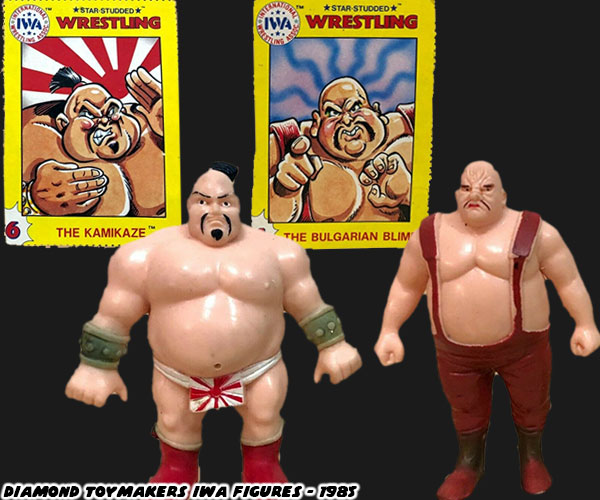
Many studios copied the formula, controls and characters featured in Street Fighter II. Data East had copied them so closely that Capcom had to take them to court. Capcom lost the case because Fighters History and Street Fighter II were different enough that plagiarism could not be proven. This meant that other studios could also develop fighting games using similar characters and control schemes. Data East needed something to set their game apart. They had a well regarded console and arcade figure in Karnov. Data East had already brought him into modern times as a cameo boss in Bad Dudes. What the designers did next was actually tone down some of his special abilities so that he wouldn't be too overpowered. At the least they had him keep his fire techniques. In this way he could be accepted as a fighter and a boss character for the franchise.
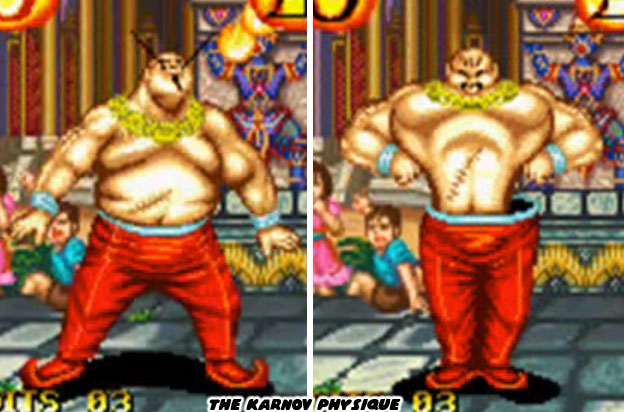
The other thing the studio did was change his appearance slightly. Let's face it, the character was always fat and should remain the same. However the final version of Karnov had scars crossing his body, from a life of battles no doubt. He still retained his muscles underneath his fat. The changes to Karnov were influenced not by legend but by professional wrestling. Professional wrestlers had inspired many characters in Capcom fighting games, this went well beyond Zangief and Darun Mister. It made sense too why the Japanese studios relied so heavily on pro wrestlers as a template. If you think about it. Pro wrestlers often had great physiques, they were photogenic and sold themselves well on television. Some were brilliant talkers and really made you believe they were the real deal whenever they cut a promo on TV. Some wrestlers were legit grapplers, boxers, jujitsu or karate experts. They could seriously hurt or kill a person if they wanted. Some of the most memorable wrestlers had a gimmick. Perhaps they were bad guys descended from German royalty, or perhaps they were savage men that came from parts unknown, in many instances those with gimmicks were considered heels or villains. Such was the case for Lawrence Robert Shreve. Or as he was known to his fans, Abdullah the Butcher.
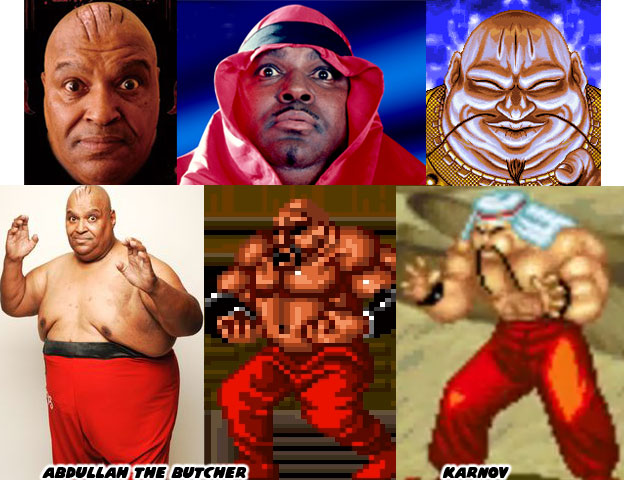
Abdullah was actually Canadian but his character was sold as hailing from Sudan. It was a nation in North Africa that was right on the coast opposite the Arabian Peninsula. His costume consisted of the familiar baggy pants, sash and curled-toed boots that accompanied fighters from the Middle East. He also showed up wearing a keffiyeh, the traditional Arab headdress which people sometimes mistakenly call a turban. People would often notice the deep grooves in his forehead. They were the residuals of a life of "blading" or cutting himself open so that he would bleed during a match. He would take chair shots to the head and get busted open so many times that all that was left was scar tissue on most of his forehead. He would sometimes entertain guests by sticking poker chips in his forehead, they wouldn't fall out when he leaned forward. Abdullah lived up to his "butcher" moniker and didn't wrestle as much as he would gouge at his opponents with a fork, nail or sword. The matches he took part in were guaranteed to be a gore-fest.
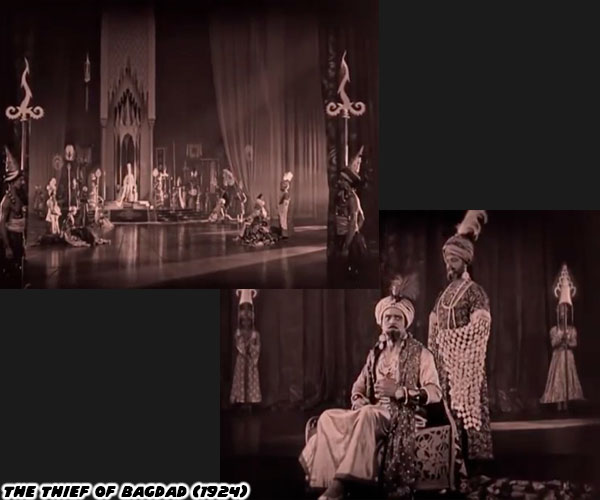
Not every wrestling match was a test of athletic prowess, or a chance to see holds traded between two genuine "shooters." Some of the matches were just ugly brawls featuring foreign objects, barbed wire, thumbtacks and broken glass. These bloody "death matches" helped build the reputation of an opponent and made them all the more fearsome. This was especially true if they could beat Abdullah. I talked about him, Arabian and fat characters on an earlier series about representation. He was just one of the actual people that influenced the development of fighting game and manga characters. The Middle Eastern fighter would evolve as technology did. When fighting games went to 3D some things changed and some things stayed the same. The Street Fighter series seemed to regress in this regard. Some returning characters stayed the same while some characters got a makeover and it was not always pretty.
Dhalsim changed greatly between titles. Gone was his bald head and shaven face. Now he sported a turban and beard. He retained his stretchy limbs and fire-based attacks yet now the studio made all of his animations greatly exaggerated. For his new super strike his belly would blow up to grotesque proportions before he spat out an enormous fireball. It was ugly and a return to the balloon attacks of Karnov and Maherl. These strange inflation gimmicks were never done in any 2D version of Street Fighter. The new development team thought it would be a good idea to go overboard with the animations now that they were in 3D. Not only did they redo his moves they also redid his look for the series. Dhalsim regressed to a design that was much older and more stereotypical of Indians.
The original concept art of the Indian fighter in Street Fighter II was known as the Great Tiger. He wore a turban and had mystical attacks. In an alternate version of the concept art he wore an elephant "Ganesha" mask and fought while standing on one foot. They were some demeaning designs. The creators working on Great Tiger went away from trope and ended up creating a fantastic character. The Sikh's were the religious group that believed hair was sacred. This was why they kept their beards and wrapped their long hair in turbans to begin with. Dhalsim humbled himself and shaved off his hair and wore rags. Most any other game studio would have made an Indian with a beard and a turban but Capcom in the late '80s and early '90s was a different studio. They knew how to challenge public perceptions and create an Indian that defied convention. He stood out among the cast and this was before players could even see his stretchy limbs or fire attacks.
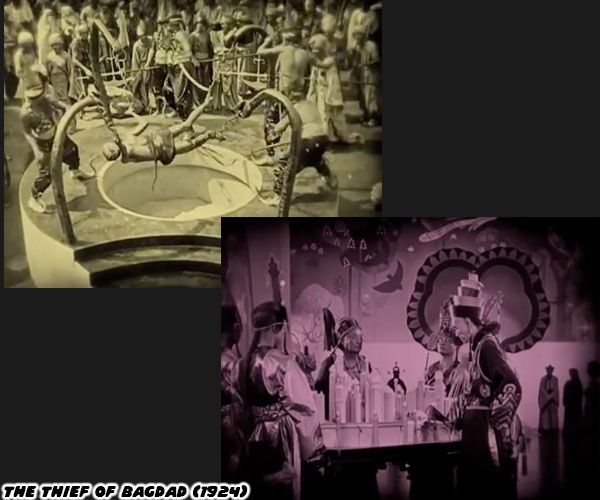
Sadly the developers working on Street Fighter V chose to ignore the established look. They thought they could improve on the character. By going back to the old stereotypes they ended up weakening his look. Again, this decision was made on Yoshinori Ono's watch and he should ultimately be held accountable for the direction the series went in. Dhalsim was not the most recent South Asian character added to the lineup. Nor was he the first 3D fighter to represent the region. We will look at these pioneers in the next blog. As always if you enjoyed this blog and would like to sponsor me please visit my Patreon page and consider donating each month, even as little as $1 would help make better blogs and even podcasts!
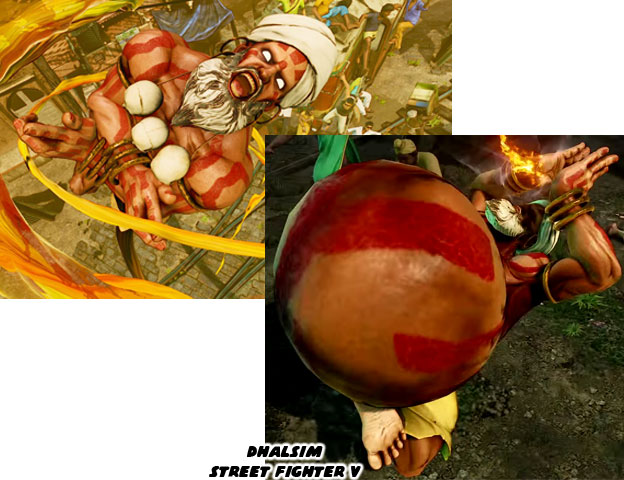
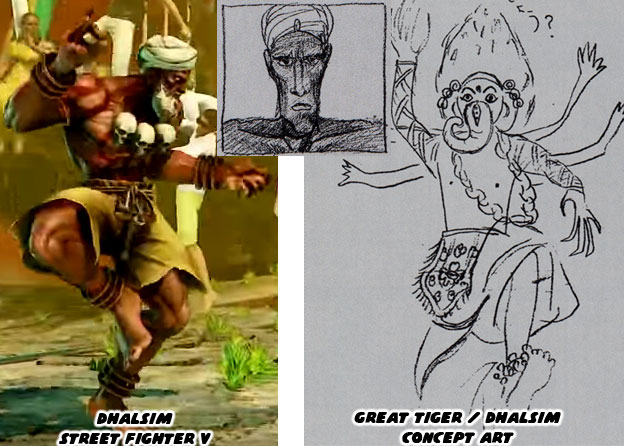

I'll admit, I liked Dhaslim's new look when I saw his reveal trailer. I thought it made him look more "sagely", like his understanding of his mystic arts had grown stronger.
ReplyDeleteBut now I question why? Is my like of his changed look rooted in stereotypes fed to me since childhood? I suppose your series can help me arrive at an answer, along with how we came to modern Middle Eastern designs like Rashid and Shaheen.
Looking forward to more, Mex.
By the way, have your heard of the new Bengus SF art?: http://www.neogaf.com/forum/showthread.php?t=1156043
Happy Holidays.
LaughingDragon, that's part of the dilemma that character designers deal with. They are told, okay, give us an Indian mystic that is a good fighter and can breathe fire. The first thing they think of is a dude with a beard and a turban because this is what everyone will recognize. But they never seem to go beyond that and see how they can break convention. Dhalsim was a very unconventional character that started off as a super ugly trope. Unfortunately the people left at Capcom seem to be going backwards in their designs. I hadn't heard of new Bengus art, oh boy looks good.
Delete